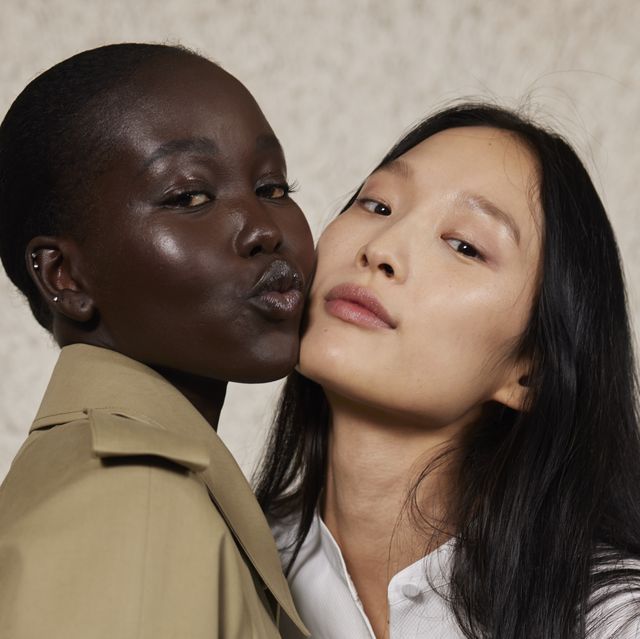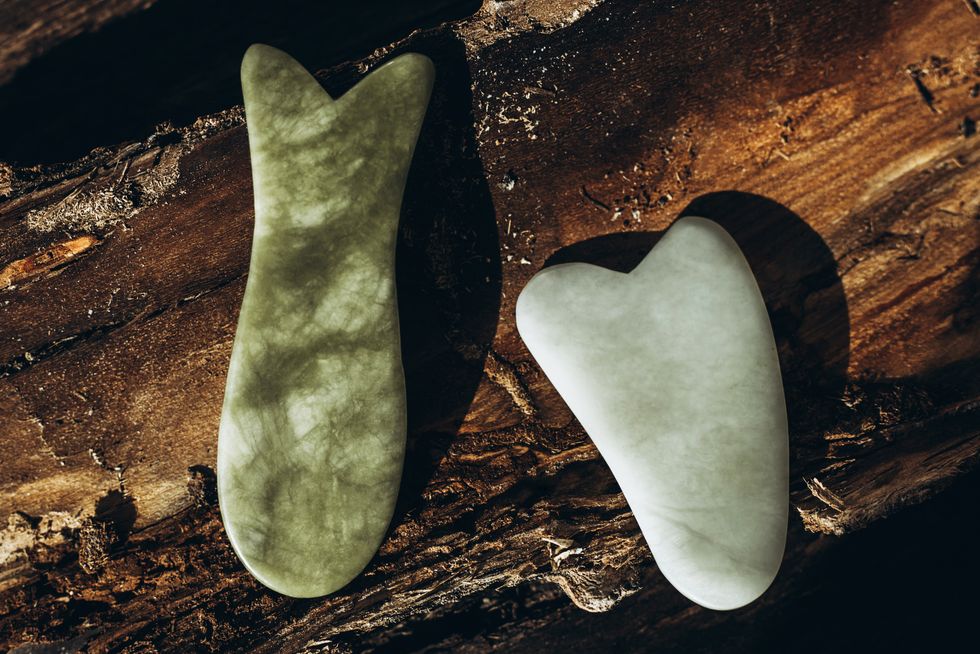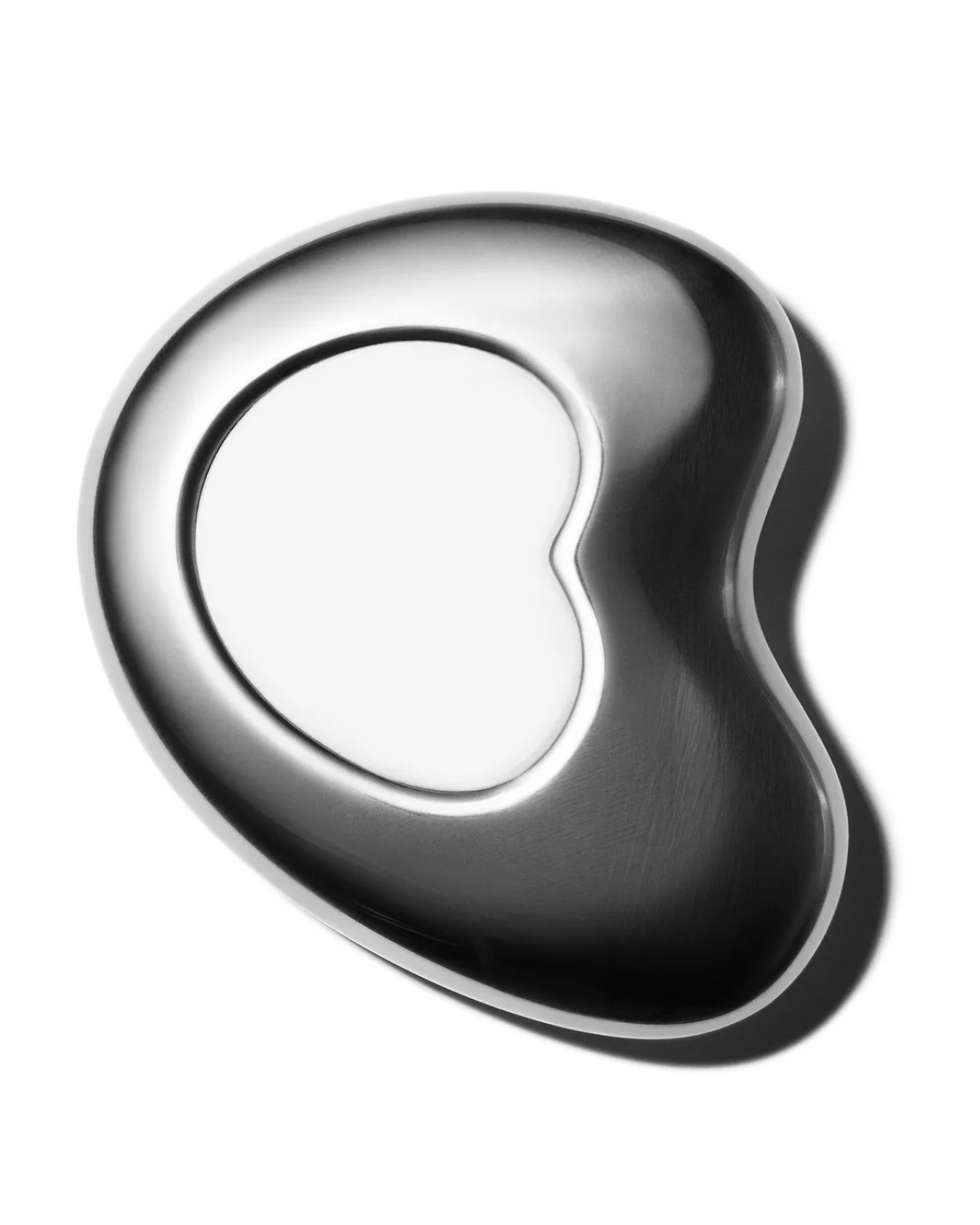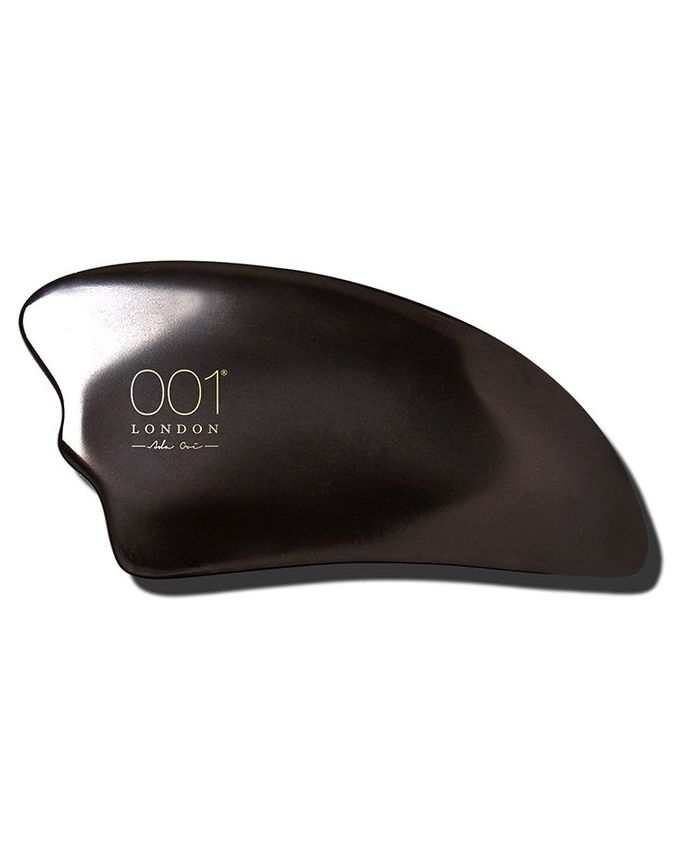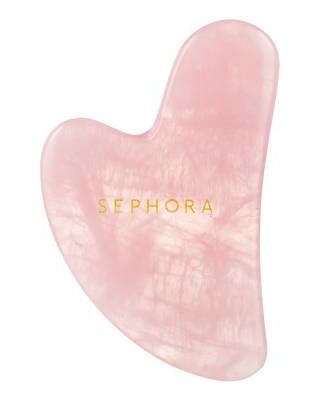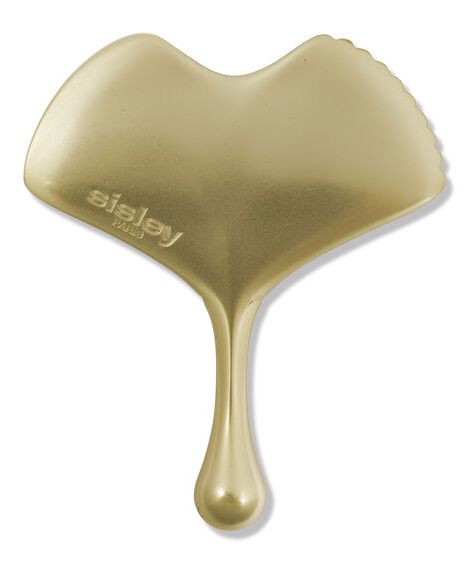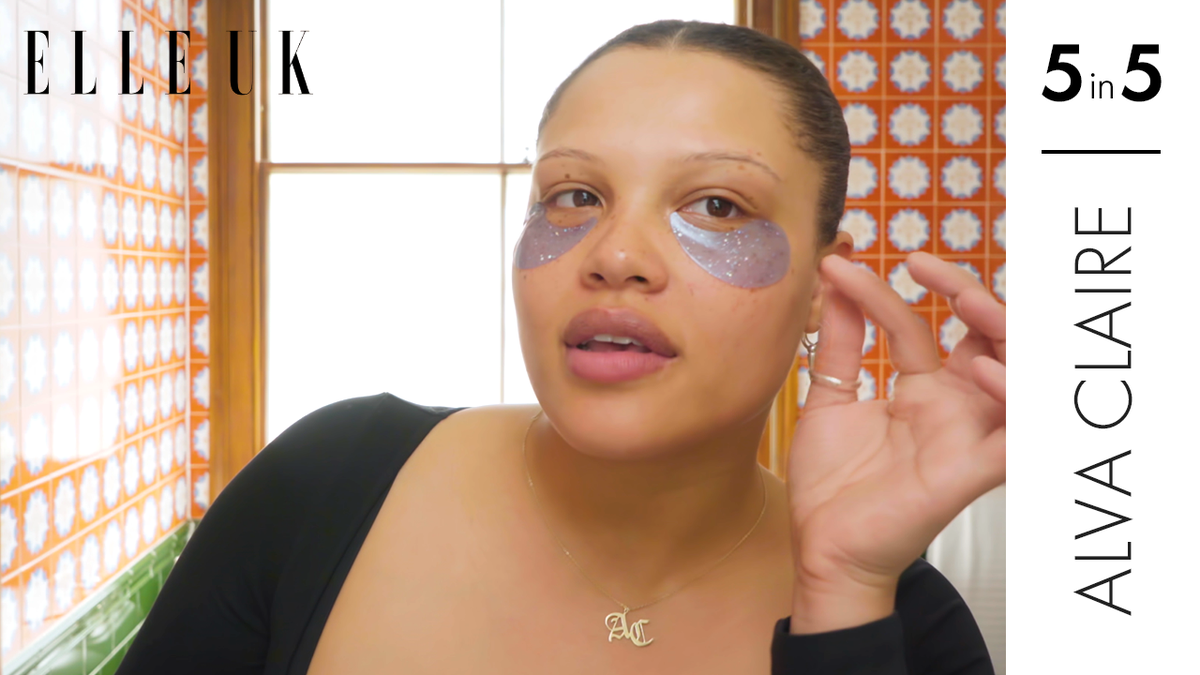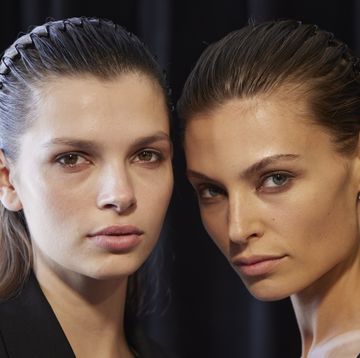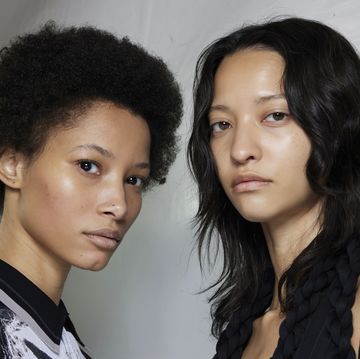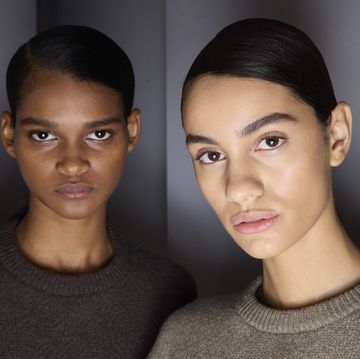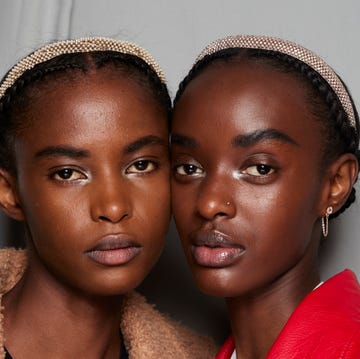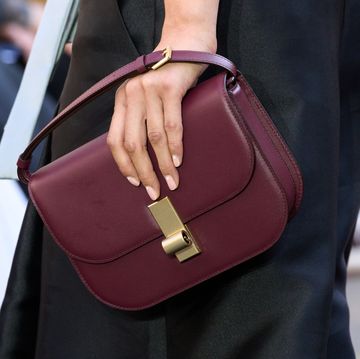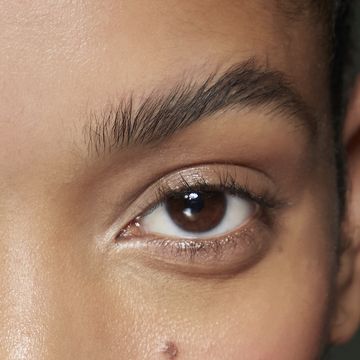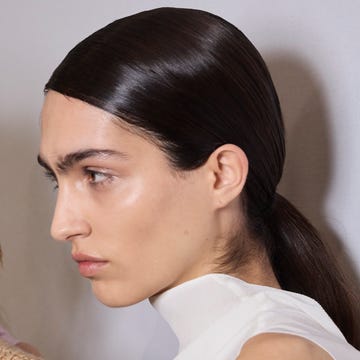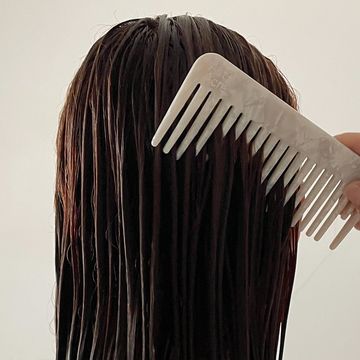If your Instagram feed and TikTok 'for you' page is anything like ours, you've probably lost count of the amount of videos you've seen with people scraping, slapping and massaging their faces with various skincare devices (we promise it's not as painful as it sounds.)
Along with the peak of reels and TikToks has come an influx of videos on how to master various facial massage tools and practices, the most prominent being gua sha.
Glowy-skinned, beaming individuals stand in front of the camera, holding jawlines taught with the flat side of a (usually) heart-shaped pink quartz and wax lyrical about the firming and toning properties of these magical instruments, promising that you too could have the cheekbones of Bella Hadid if you dedicated just a small portion of your time to getting physical with your face.
But, whilst anyone can pick up a facial tool and start filming, how can you tell your expert from your amateur? With this in mind, we went straight to the pros to find out everything you need to know about gua sha. Spoiler alert: it won't change your natural face shape...
What Is Gua Sha?
The recent boom gua sha (pronounced gwah-sha) has experienced on social media, often in the form of aesthetically pleasing rose quartz and jade tools, is but a small part of its long history. 'Gua sha originates from traditional Chinese medicine practices,' says acupuncturist and facialist to the stars, Ada Ooi. 'A tomb from over 70,000 years ago was discovered with stones carved into tablet and needle shapes. As is documented, some would be heated by fire for medical use to treat discomfort or disease.
'The gua sha technique translates to gua (scraping) sha (sand), meaning that by scraping the skin, you're able to stimulate reflexive regions and unblock internal imbalance through letting the blood disperse and dissipate through the surface of the skin,' Ooi explains.
Where the recent social-media frenzy around gua sha has focused heavily on its benefits for the face, this technique has primarily been used on the body by generations of Chinese families.
'Fast forward to the present day, studies have found that within 10 minutes gua sha can cause at least fourfold increase in microcirculation, and it's now been used across different areas like aesthetic, musculoskeletal, mental health and well-being,' says Ooi.
What Are The Benefits Of Gua Sha?
It's a myth that using a gua sha will give you a 'slimmer' face. Instead, gua sha acts on the muscle tissue, fascia and helps to encourage blood flow.
'[Gua sha] has significant brightening, lifting and sculpting improvements for your face. It stops the face from holding tension and softens the look of any fine lines that may have occurred as a result,' says Ooi.
'With the increase of blood pumping to the face, it also hydrates and plumps the skin to give a radiance boost.'
We're always here for reaping the benefits of a post-workout glow without even hitting the treadmill. But there's much more to this treatment than just the surface level benefits. As Ooi explains, the benefits of the gua sha can impact everything from alleviating colds to reducing stress.
'My grandma used coins and jam jar lids to gua sha behind my ears where the lymph nodes are located when I started to get a cold to stop it progressing as much as possible,' she says.
'[Gua sha] also helps in sending signals to our nervous system, alleviating overall stress and aligning our mental health. Because it drastically improves your blood circulation, it boosts detox and metabolism, encourages new cell growth and most importantly, you are stimulating the Chinese meridian network that connects to our organ systems, helping to regulate our bodily functions and support overall health.'
How To Use A Gua Sha
Firstly, you'll want to have a clean base to work with (pushing dirt and grime into your skin with a gua sha = breakout central), so its best practice to use your gua sha right after cleansing, according to aesthetic therapist Mina Lee.
Next, she recommends using an oil to give your skin some slip - the last thing you want to do is to drag the skin. A non-comedogenic, lightweight oil such as squalane is kind on most skin types and will help boost hydration. Then comes the fun part.
'Hold the gua sha tool at a 15-45 degree angle and glide it gently over your face and neck in an upwards and outwards motion. Use lighter pressure around delicate areas like the eyes and apply slightly more pressure on areas like the jawline and forehead,' says Lee.
If you have specific concerns, whether that's puffy cheeks or a tense jaw, Ooi has this cheat sheet to share.
Chin & jowls drainage
Anchor the tool in the middle of your chin, gently scrape upwards to the front of ears, press and wiggle, then go to the back of the ears and glide downwards to the neck and end at the collar bone, press and wiggle there. This wakes up and facilitates lymphatic drainage. Repeat 3 times.
Saggy cheeks
Place the tool on the side of your mouth and scrape upwards to the front of ears, press and wiggle there.
Masseter relief
Using medium to strong pressure, swipe your tool to the side of your face toward the masseter (chewing muscle). Continue to loosen this area by sliding over the jaw bone towards the back of the jaw. This part suffers from consistent pressure and tension from chewing, talking, and grinding.
Forehead release
Start scraping from the top of your eyebrows to the hairline in straight lines or zigzag motions.
How Often Should You Be Using A Gua Sha Tool?
While incorporating gua sha into your routine has immediate and longer term benefits, you'll get what you put in with this practice.
'To achieve the best results, using a gua sha tool once or twice a day is recommended,' says Ooi. 'Regular use is best for maintaining the benefits long term within the face as stagnated fluid will be removed regularly and the build up over time will be minimal.'
What Time Of Day Is Best To Gua Sha?
In terms of morning vs evening debate? Why not both! As it turns out, you can have your cake and be sculpted too.
'It can be a lovely addition in your morning routine to wake-up the face and also de-puff and brighten your complexion, especially after a night of having a few drinks or salty food where the build-up of fluid retention can really be seen in the face,' advises Ooi.
'At night, gua sha can feel like the start of the wind-down routine to get you relaxed and ready for bed. It can also work to reduce the stress and tension of the day by calming the mind before sleep.'
What Are The Differences Between Doing Gua Sha At Home vs. Professionally?
Unlike a lot of skincare treatments, the consensus is that it's actually more effective to keep up with the gua sha at home, rather than just waiting weeks in between seeing an expert. 'I encourage everyone to do gua sha at home,' says Ooi. However, for those looking to get the most out of their gua sha experience, it's worth booking in with a professional to target areas of concern that you're not trained to identify.
'When being performed professionally, the treatment can be tailored using a combination of different techniques to target a variety of concerns and alleviate them,' explains Ooi. 'As a professional I can observe the face and body and decipher which areas need to be the focus during the treatment, revolving the gua sha routine around those concerns accordingly.'
What To Look For When Buying A Gua Sha Tool
With so much demand, the market has flooded with hundreds of options for gua sha tools, and not all are created equally. Ooi imparts some sage advice when it comes to choosing the right one for you; 'The most important aspect that I pay attention to is the shape and cut. The tool should be high-quality and well-crafted so it fits the curves of the areas you want to treat; A larger piece for whole face and décolletage and a smaller piece for places where you need precision.
'You should also choose a stone that you like, be it by the look of it, or how it feels on your skin. Consider the smoothness, the temperature and the weight. If you're an energy believer, you might also choose a stone that aligns with your body's energy.'
Is Gua Sha Suitable For Everyone?
While using a gua sha tool is pretty non-invasive in comparison to other facial treatments, there are some caveats to consider, as Ooi explains; 'Gua Sha can be utilised by most skin types, however it's best to consult your doctor or dermatologist if you have any serious skin problems such as rosacea.'
'It should not be used if you are taking any blood thinners or medicines that prevent or reduce blood clotting ability,' she adds. Those with active acne might want to avoid any friction on the skin, too, as it might feel uncomfortable. Instead, try cooling facial ice globes or jade roller to ease any redness.
If after a session of gua sha, your skin turns the same type of red as it does after a spontaneous sprint for the last train, don't panic. 'Mild reddening of the skin known as erythema is typical to see on places where there has been firm pressure,' explains Ooi. 'Once the routine is finished often the redness will go down and no bruising will occur afterwards.'
ELLE Collective is a new community of fashion, beauty and culture lovers. For access to exclusive content, events, inspiring advice from our Editors and industry experts, as well the opportunity to meet designers, thought-leaders and stylists, become a member today HERE.
